This post may contain affiliate links. Please read my disclosure and privacy policy.
When it comes to smoothies, fruit is typically what makes them sweet and delicious. However, when you combine several types of fruits into a single drink, the natural sugar content can start to add up quickly.
That’s why I’m sharing two low sugar smoothie recipes with you today, along with several variations to help keep your week interesting. They’re made with low-sugar berries, which are loaded with antioxidants, and a sneaky serving of frozen cauliflower and creamy avocado to help bulk them up, without adding extra sugar into your glass.
Which Fruits are Low in Sugar?
When trying to make a smoothie that is lower in sugar, I like to use a mix of low-sugar fruits and vegetables, along with a small amount of sweeter fruit, like banana, mango, or pineapple, to make the smoothie palatable. (I experimented with using low-sugar fruits exclusively, but they were not enjoyable at all– my taste testers wouldn’t drink them.)
Here are some low-sugar fruits that you can try in your smoothies:
- Raspberries (5 g per cup)
- Strawberries (7 g per cup)
- Blackberries (7g per cup)
- Kiwi (6 g per fruit)
- Blueberries (12 g per cup)
- Lemons (1.5 g per fruit)
- Avocado (1 g per avocado)
- Granny Smith Apple (14 g per fruit)
And to help “bulk up” your smoothie without using extra fruit, you might also want to try adding in one or more of the following ingredients to help add fiber and more nutrition.
- Zucchini
- Cauliflower
- Chia seeds
- Hemp hearts
- Almond butter (or another nut/seed butter)
- Fresh spinach
These extra add-ins help add creaminess, without relying dairy, and are relatively neutral in flavor so they won’t overpower the overall taste of your smoothie.
To keep your smoothie palatable, add a small amount of sweeter fruits. The following options are great for keeping your smoothies relatively low in sugar. (For these recipes, I aimed for less than 15 g of sugar per smoothie serving.)
- Half a banana (7 g)
- Half cup pineapple (7g)
- One date, deglet noor variety (4.5 g)
Is Fruit Sugar Bad For You?
Now, I don’t want this post to scare you about eating fruit, because I personally eat it quite liberally and don’t think you should worry about the natural sugar it contains. Though the research is limited, small studies have shown that the fructose found in fruit does NOT act the same way in the body as industrial fructose, such as table sugar. (source)
Fruit contains numerous substances that block the effects of fructose, including vitamin C, potassium, and antioxidants, which may explain why the fructose from added sugars is associated with hypertension, but the fructose found in fruit is not. (source)
Eating fruit may also promote weight loss.
In this study, researchers compared a low-fructose group, that consumed no fructose or added fruit, to a moderate fructose group that included fruit in their diet. To their surprise, the group that consumed fruit lost more weight compared to those on the low-fructose plan, even though both groups were eating the same number of calories.
I share this information because I want you to LOVE everything you eat, and if you’re avoiding fruit because you think it will help you lose weight faster or because you’re scared of the natural sugar content, you might not be enjoying your meals to their fullest. You might even feel restricted and wind up stuck in a cycle of binge eating like I did.
Enjoying what you eat daily is key to sticking to a healthy lifestyle and achieving permanent results, so don’t be scared to add more fruit to these recipes if that will make you enjoy them more. You’ll get an extra nutrient boost as a bonus!
Keep in mind that a low sugar smoothie definitely tastes like it’s low in sugar, too. (In other words, they are kind of bland compared to traditional smoothies.)
That’s not necessarily a bad thing, especially if your taste buds have adapted to appreciating the natural sweetness found in fruits and even some veggies, but don’t expect a low sugar smoothie to taste like one you’d get at a local smoothie bar. (Those are usually loaded with 50 grams or more of sugar per serving!)
I also wouldn’t go adding zero-calorie sweeteners to this smoothie (you can read why I stopped using stevia here), because I feel like that might defeat the point of trying to reduce your sugar intake. Let your taste buds adapt to the natural sweetness of fruit, without skewing your taste buds, or add a little extra sweet fruit like the ones I mentioned above to boost the flavor.
Mango, which is a little higher in sugar, may help to control or even lower blood sugar levels (source), so don’t be afraid to add an extra handful to improve your smoothie’s overall flavor. Feel free to get creative!
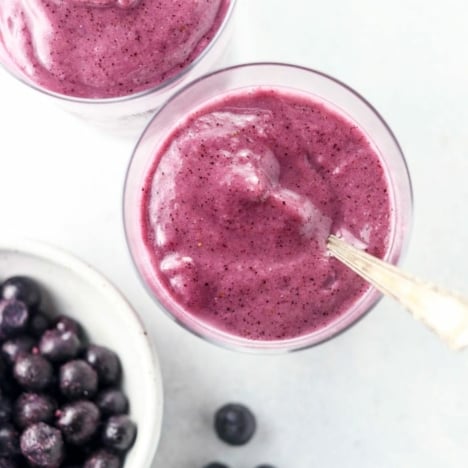
Ingredients
- 1 cup fresh or frozen wild blueberries
- 1/2 banana
- 1 cup frozen cauliflower florets
- 1/4 avocado
- 1 cup water , plus more as needed
- 1 tablespoon lemon juice
Instructions
- Combine all of the ingredients in a high speed blender and blend until smooth and creamy. Add more water as needed, then serve immediately.
Nutrition
Per serving: Calories: 133, Carbohydrates: 24, Fiber: 6, Protein: 3, Fat: 4, Sugar: 12
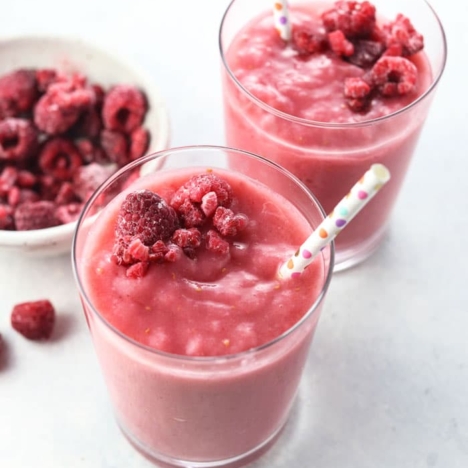
Ingredients
- 1 cup frozen strawberries
- 1/2 cup frozen raspberries
- 1/2 cup pineapple chunks
- 1/4 avocado
- 1 cup frozen cauliflower florets
- 1 cup water , plus more as needed
Instructions
- Combine all of the ingredients in a high-speed blender and blend until smooth. Add more water as needed to facilitate blending.
Nutrition
Per serving: Calories: 112, Carbohydrates: 19, Fiber: 6, Protein: 2, Fat: 4, Sugar: 10
Recipe Notes:
- To keep these smoothies affordable and accessible year-round, I used frozen fruit, but if you use fresh fruit these recipes will have more flavor. If berries are in season where you are, I’d encourage you to use fresh fruits and less water when you blend these.
- Feel free to swap the fruit in these recipes with any of the other ones I mentioned above.
As always, if you try something different please leave a comment below so we can all benefit from your experience!
—
Reader Feedback: What’s your favorite smoothie combination? Feel free to share recipes in the comments below!
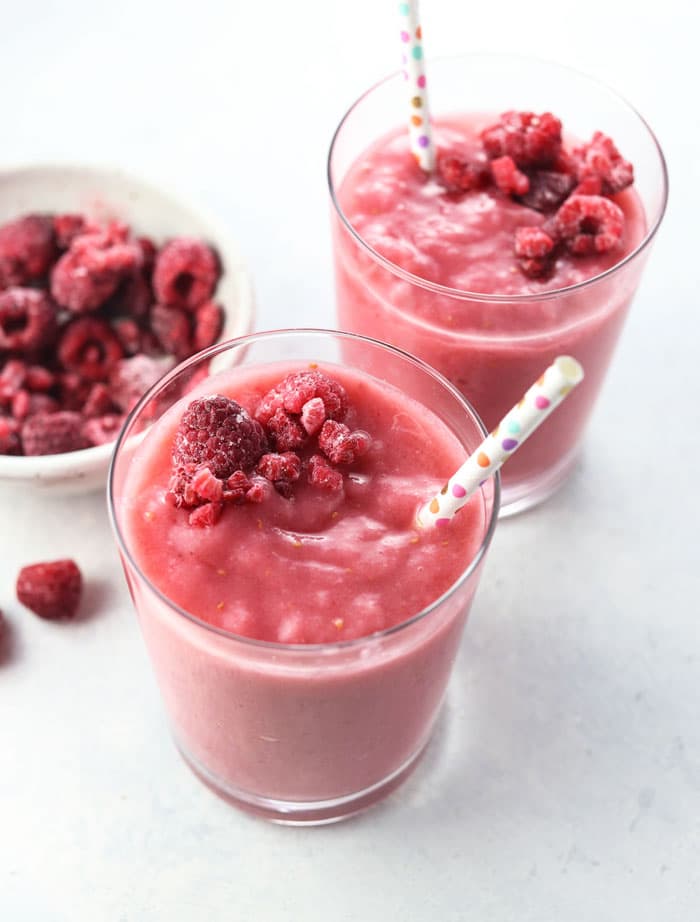
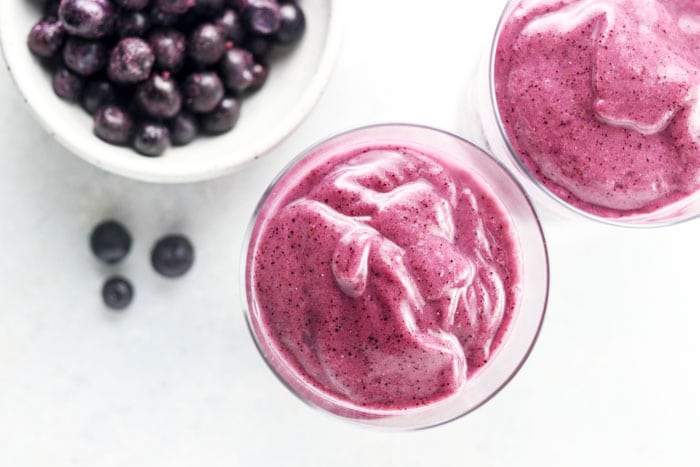
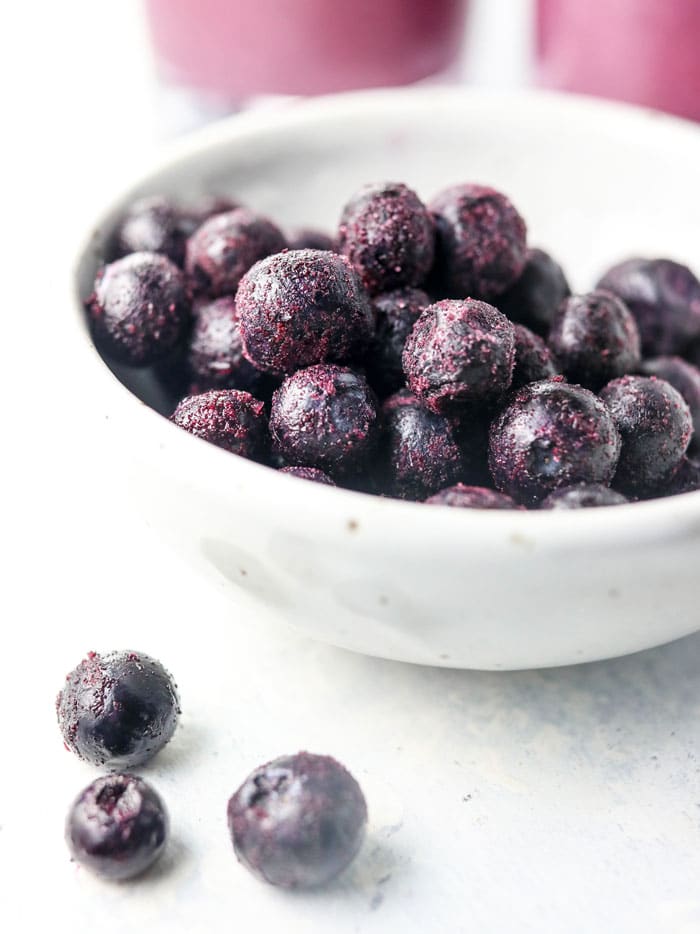

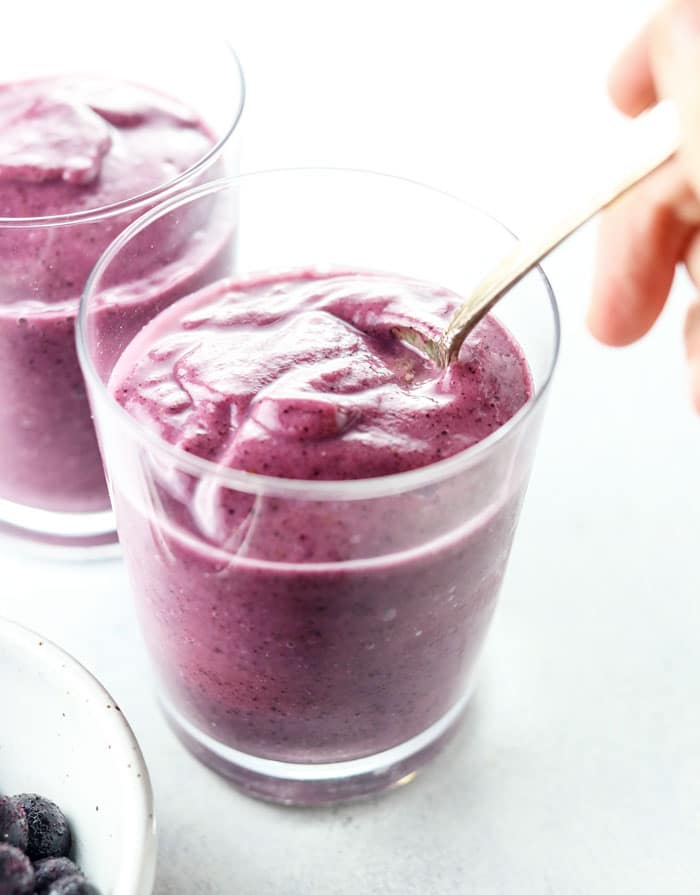
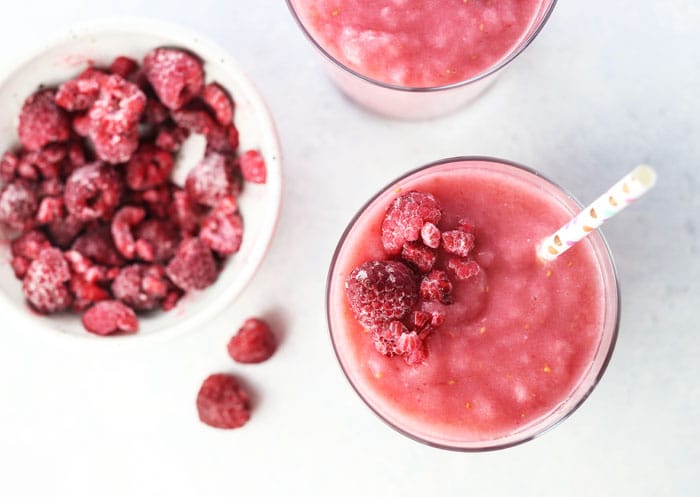



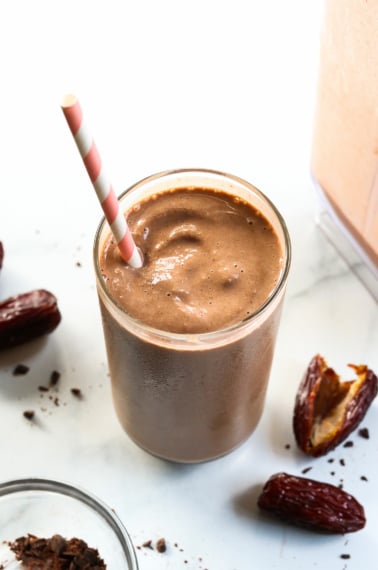
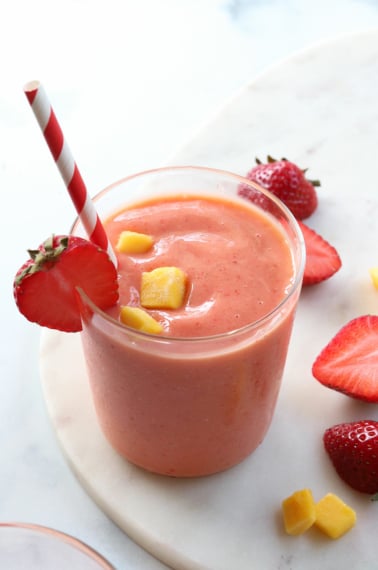






We love your almond butter pancakes!! I just added your spiralized butternut pasta with mushrooms and sage to my meal planning app last night and am looking forward to it. Our blender is on its last leg, so this would be exciting!
I’m going to try the low sugar blueberry smoothie. So excited about the possibility of winning a vita mix!!!!
I make the easy vegetable curry and the vegan mac n cheese almost weekly. These smoothie recipes look great.
By the way, I concur with your Stevia assessment; I have not tried avocado and cauliflower in this way, and I will make these smoothie recipes this week! HAPPY 2018, AND THANK YOU FOR ALL THE GREAT RECIPES!
I made the witch finger cookies for Halloween – big hit with my husband! I’ll be making the avocado cilantro dressing this week. Also hope to make chocolate peanut butter balls. Thanks for the giveaway!
I made the Veggie Chow Mein this week, and my whole family LOVED it!!
Just curious about your study citation above, is there info regarding the participants exercise level or what else they’re eating? Are people to assume they kept everything else in their lives ‘as is’? I’m not a big fan of studies, given the (possible) personal bias of experimenters, as well as other totally random factors.
Of course, it makes sense that fruit is better than ‘industrial’ fructose, but the weight loss study has me wondering, particularly, if fruit contributes negatively to those with blood sugar and/or pancreatic issues.
Am I missing something with your reliance on them?
Yes, I often find myself frustrated with most studies because nearly all of them are biased to an extent. I especially hate it when they isolate something (like fructose) and then apply those findings to everything with that ingredient in them, even though fructose is never found in nature isolated on its own– it’s only isolated in refined things, like white sugar or high fructose corn syrup. That’s why I think it’s important to point out that fruit contains other nutrients that actually block the effects of fructose.
Honestly, I tend to rely less on studies these days and more on my gut feelings. My gut says that fruit isn’t bad for me, the only time I doubted that was when some researcher got publicity for saying otherwise (though his research never actually looked at whole fruits– he just lumped them into the “fructose category” after studying industrial fructose).
However, I know some people feel more comfortable seeing studies, so that’s why I share the ones I can actually find that look at fruit, rather than isolated fructose. Of course, I’ve got a baby constantly breastfeeding on my lap these days (and she kicks my hand a lot!), so I can’t write more, but Dr Gregor has compiled several fruit-centered studies on his website, like this one which does address blood sugar spikes from fruit: https://nutritionfacts.org/2016/08/09/what-about-all-the-sugar-in-fruit/
I made your mushroom and leek frittata on Christmas morning from No Excuses Detox. Yum! I also made your GF cinnamon rolls and they were good.
I just found your blog this week and can’t wait to jump into the recipes! Our goal for 2018 is to eat less meat and you have such a great selection of delicious looking recipes! First on my list is the Kung Pao Chickpeas!
A Vitamix blender would be an awesome addition to my kitchen!
Hi Megan, I regularly make recipies from your site and am never disappointed. This week, I’m planning to make Paleo Double Chocolate Pumpkin Muffins; a recipe in regular rotation at my house and a great way to use leftover pumpkin. Thanks for all your hard work.